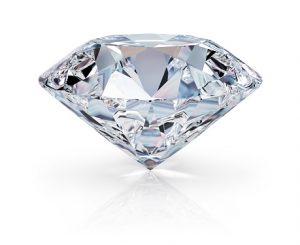 Diamonds are considered the hardest material on the planet and have a number of different industrial applications. However, this commonly found gemstone is more often associated with proposals and getting married, more so than for its practical uses. Diamonds may now have an additional application as new research suggests that nanodiamonds could prevent infections after root canals.
Diamonds are considered the hardest material on the planet and have a number of different industrial applications. However, this commonly found gemstone is more often associated with proposals and getting married, more so than for its practical uses. Diamonds may now have an additional application as new research suggests that nanodiamonds could prevent infections after root canals.
Nanodiamonds are tiny particles approximately less than a micrometer. They are so small that millions of them could fit on the head of a pin. Much like regularly sized diamonds, nanodiamonds also have facets (sides) that enables them to be applied to a wide range of drugs and imaging agents.
Using diamonds to protect against infection
Advertisement
Researchers from the UCLA School of Dentistry and the UCLA Henry Samueli School of Engineering and Applied Science found that nanodiamonds protected disinfected root canals after the nerve and pulp were removed. Their clinical trial showed that their use could improve the likelihood of full recovery.
“Harnessing the unique properties of nanodiamonds in the clinic may help scientists, doctors, and dentists overcome key challenges that confront several areas of health care, including improving lesion healing in oral health,” said Dean Ho, professor of oral biology and medicine in the dental school and a co-corresponding author of the study.
A root canal is a treatment used to repair and save a tooth. This is often done when a tooth has become badly infected or decayed. The procedure involves removing the nerve and pulp while the insides of the tooth are cleaned and sealed. This is down to prevent bacterial growth within the pulp chamber which could lead to infection or an abscessed tooth.
Our mouths are a hotbed for bacteria, which makes protecting a recently done root canal from infection very difficult. Typically, a filling made out of gutta-percha is used to block bacteria from infiltrating the tooth, but it can break leading to infection anyway.
Using its strength in other ways
This is where nanodiamonds come into play. The researchers decided to test nanodiamond-embedded gutta-percha (NDGP) three patients undergoing a root canal. They found that NDGP was more resistant to buckling and breaking then conventional gutta-percha, allowing each patient to heal properly with unusual pain or infection.
Advertisement
This successful application of nanodiamonds shows that the material holds great promise for a wide range of medical procedures that could utilize its durable properties. In the case of its root canal application, it did not require any changes to standard procedures and was well tolerated by testing patients.
“We believe nanodiamonds could ultimately help us sidestep drug resistance in cancer, improve the efficiency of magnetic resonance imaging and address other clinical challenges,” said Ho, who is also one of the world’s leading researchers on the medical use of nanodiamonds.
Related: 6 things to know about your teeth as you’re aging
